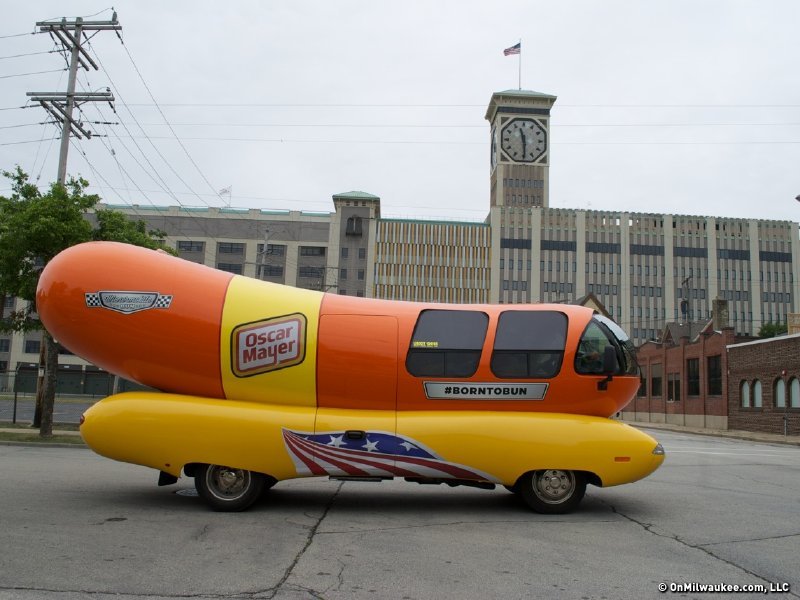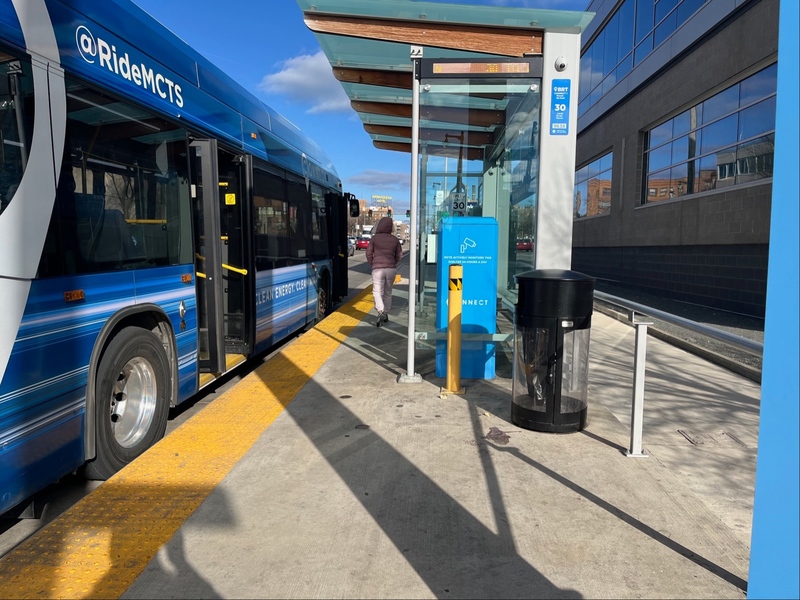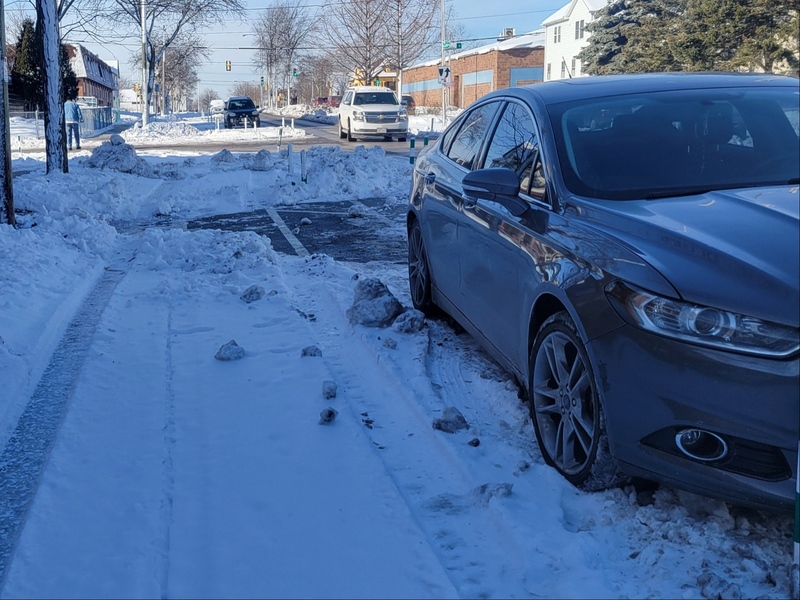If you live, work or simply drive in the city of Milwaukee, maybe you’ve seen them: two to three-foot-high traffic posts that also serve as curb extensions. They are placed strategically along the corners of several major intersections.
The traffic-calming poles are part of the city’s rapid implementation initiative, which is now in its third season, and one part of the city’s effort to reduce reckless driving, according to Marissa Meyer, senior transportation planner for the City of Milwaukee.
Meyer said the poles slow traffic by making the roadways narrower and also help improve safety for pedestrians.
“It makes the crossing distance shorter and increases visibility because people can walk a little further into the street before they cross,” she said.
Narrowing the roadway also makes it nearly impossible for cars to weave around and pass other vehicles from the right lane, she added. The bolted-down plastic posts, which won’t stop vehicles in their tracks if the two collide, still serve as a deterrent.
Meyer said traffic studies have found that the biggest impact of the poles, which were first piloted in 2020, has been on extreme speeders.
On North 27th Street, which has poles from West Wells to West State Street, excessive speeding (over 40 miles per hour) decreased 40%, while yielding to pedestrians increased by 23%. That intersection, along with South 13th Street from West Manitoba to West Harrison streets, were the first two neighborhoods to pilot the poles.
Speeding decreased in that South Side neighborhood by nearly 10% while yielding to pedestrians increased from 3% to 18%, according to the city’s traffic study.
Both those pilots were spearheaded by Business Improvement Districts in those neighborhoods. The Near West Side BID covers North 27th Street and BID #50, also known as Crisol Corridor, covers the project area on South 13th Street.
Leif Otteson, executive director for BID #50, worked with local businesses and the city for several months to get a contract to place and install poles in his district.
He said the poles complemented other steps the district has taken to slow down drivers, including the installation of solar-powered, flashing pedestrian signage. Aside from a few business owners concerned about parking and the narrower turn lanes, the posts have garnered positive reviews.
“We’ve gotten no complaints from residents,” he said. “You got to trade for safety, and in return you may get a little bit more frustration.”
In addition, he said, the curbs don’t affect parking, as they are only placed at intersections that prohibit parking within 15 feet of the crosswalk.
Otteson said he envisions the poles as a temporary measure and hopes the city will place permanent concrete slabs to replace the artificial curb extensions.
Concerns about costs
One challenge that has resulted from the pilot project, he said, has been the maintenance costs. The BID’s agreement with the city included a stipulation that it cover costs for cleanup and snow removal around the poles.
“Ideally we’d love to see something in the city budget that would account for the snow removal,” he said. “Something that makes it more sustainable.”
Just over 10 blocks north of that neighborhood, corner poles were installed two months ago along several intersections on West Mitchell Street between South 6th and South 12th streets.
Nancy Bush, executive director of the Historic Mitchell Street BID #4, said her organization was approached by city Department of Public Works representatives last summer about the poles. She presented the plan to members of her BID and, not surprisingly, she said, they were all in favor.
“Traffic has been horrendous here,” she said. “It’s been a problem that has continued to worsen.”
Early results indicate that traffic has calmed down since the poles were installed, she said.
“I’m grateful to the city because it’s a lot better than not doing anything,” she said.
Bush said her district’s agreement with the city did not include snow removal, and that the poles would be removed in November and reinstalled in the spring.
In addition to Mitchell Street, other locations where posts were placed recently include West Center Street between West Appleton Avenue and North 32nd Street, and South Cesar E. Chavez Drive, between West Walker Street and West Greenfield Avenue. Past locations include West North Avenue between 15th through 20th Streets and between 44th through 59th, and on West Villard Avenue between North Hopkins and North 32nd streets.
Part of larger initiative
During the summer, Mayor Cavalier Johnson signed a resolution that added Milwaukee to a growing list nationally of cities to implement a “Vision Zero” approach to eliminate traffic deaths. Adopted several years ago in Madison, Vision Zero involves a collaboration between residents, community groups and officials to increase road safety by implementing engineering, educational and other comprehensive approaches.
Also, in late October, the city announced the construction of reckless-driving mitigation projects funded through the American Recovery Plan Act, or ARPA. Those 16 projects, which include signage, high visibility crosswalk markings, refuge islands and more curb extensions, are part of a $19 million dollar investment by the city to curb reckless driving.
“These projects are just the beginning as we will continue to make improvements in neighborhoods across the city,” Johnson said in a news release. “This is part of a comprehensive effort that includes changing behavior, enforcement and neighborhood involvement to reduce reckless-driving dangers.”
Although current efforts seem to be having an impact, Otteson said, it’s clear that motorists are still driving recklessly.
“I saw a hummer plow straight through one,” said Otteson about a corner post on South 13th Street. “We’re still optimistic about the city’s plans and about how things will go.”
Mendez, who is bilingual in English and Spanish, graduated from UW-Milwaukee, with a double major in Journalism and Media Communications and Sociology. In 2008, he won a Society of Professional Journalists' regional award for social columns dealing with diverse issues such as poverty, homelessness and racism. Currently, he's a master's degree student at the Diederich College of Communication at Marquette University.
His interests include scholastic research, social networking and the Green Bay Packers.







